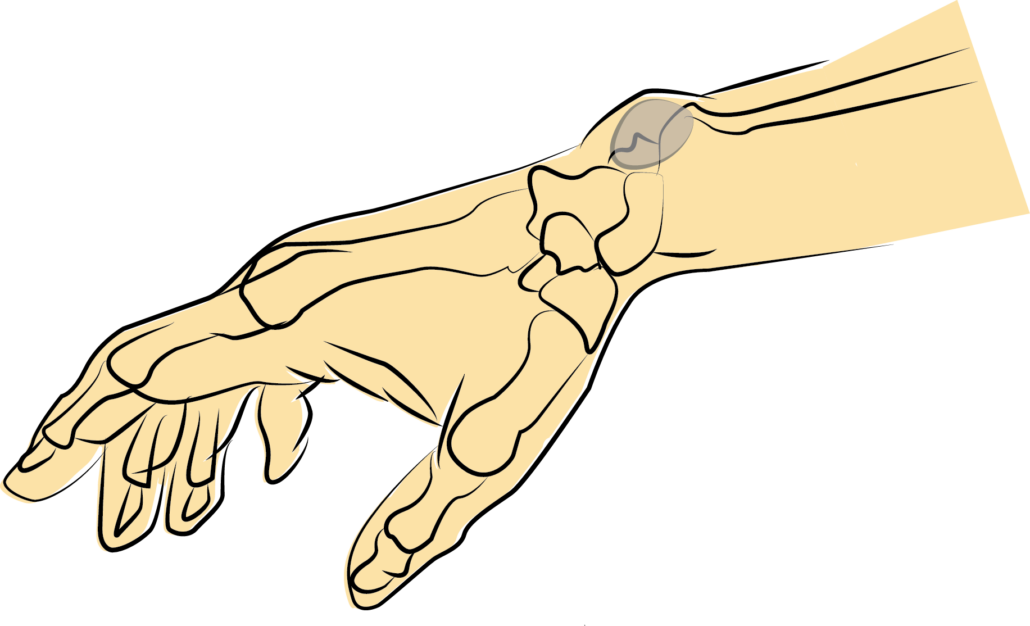A ganglion cyst, also known as a “bible bump” or “bible cyst”, is a lump on the top of a joint or tendon covering. They can occur in anyone at any age, although women aged 20-40 years old seem to suffer a disproportionate amount compared to other groups.
The most common place for them is the back / top of the wrist, but they can occur elsewhere such as the palm side of the wrist, base of the fingers, end of the top finger joint, top of the foot or outside of the knee or ankle.
There is no scientifically agreed cause for ganglion cysts, but some theories include:
- Tissue breakdown due to trauma, forming small cysts that may join
- A flaw in the joint capsule or tendon sheath that allows tissue to bulge

How do I know I have a ganglion cyst?
The lump is usually 1-3cm (1/2 – 1 ¼ inch) in diameter, and is stationary (note that cysts on the fingers can be smaller). However, it may change in size. They often look like a white balloon-type lump filled with fluid or gel.
The lump may appear gradually over time, or rather suddenly. Size may fluctuate, with the cyst even going away on occasion, only to return later.
Ganglion cysts are usually painful as well as ugly. Note “usually”…a third of cyst sufferers report no pain. For the majority that do have pain, it will usually worsen when the joint is moved. The pain is caused by the lump pressing on a nerve.
The good news? Ganglion cysts are usually harmless unless they cause pain, inconvenience the movement of a joint, or anxiety in the patient. They are not cancerous.
Should I see a doctor?
For peace of mind it is recommended. Medical professionals can recommend a course of treatment as well as confirm the fact it is a ganglion cyst and not something more serious. Emergency treatment is not needed unless significant trauma has occurred.
The location and appearance usually suggests that the lump is in fact a ganglion cyst, and doctors can confirm the diagnosis by withdrawing some of the liquid inside using a syringe. Alternatively, ultrasound can be used to confirm the lump is liquid-filled rather than solid. A simpler test might see your doctor try and shine a light through the cyst to confirm it is not solid, but actually liquid-filled. An MRI is also an option, and highly effective at confirming whether or not the lump is a ganglion cyst, but MRIs can be expensive and difficult to schedule depending on where in the world you are.
Treatment
Often no treatment is required, and the cyst will go away by itself. For those tired of the unsightly, occasionally painful lump there are a variety of treatment options.
- Use of a splint, immobilizing the joint where the cyst is located. As activity can cause the lump to grow in size, preventing movement can allow the cyst to shrink naturally and also relieve painful pressure on affected nerves. Splints should not be used long-term as they can lead to loss of muscle.
- Draining the fluid with a syringe (an “aspiration”). This reduces the size of the cyst, and then a steroid anti-inflammatory solution may be injected. However, this method is not full-proof and occasionally even multiple treatments will see the cyst return in the future.
- This is more effective, with a smaller chance of the cyst returning. It is not 100% guaranteed though. Surgery is often recommended if the cyst is especially painful or is interfering with the patient’s movement of that joint.
